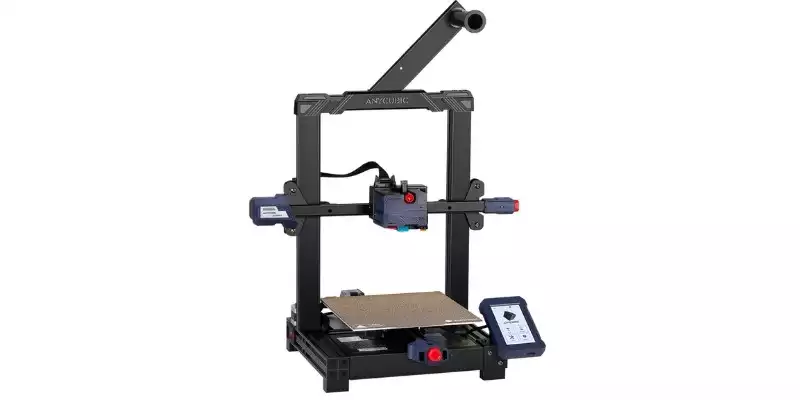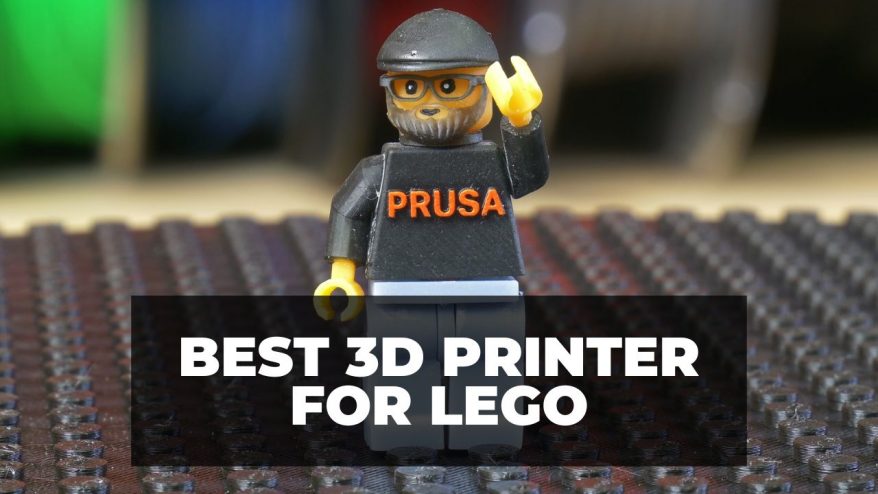
3D printing Lego is one of the most fun and creative ways to use your 3D printer. From making random pieces to see what you can build to printing specific sets. You can even print out replacement pieces when they inevitably get lost.
However you want to go about it, printing Lego can be a tricky business. Lego bricks need to be the exact right size with as few flaws as possible to ensure they’ll fit together right. To do this, you’ll need an ideal printer for the job.
|
|
|
|
|
$279.99
|
$299
|
$799-1099
|
Taking steps to increase printer reliability is a great way to keep this accuracy up. This includes using a printer with an enclosed printing space or one with a high heated bed temperature.
There are quite a few printers that do well with printing Lego pieces, so there are a lot of options. Here we’re going to look at some of the best 3D printers for Lego bricks and minifigures so you know you’re working with the right hardware.
While you’re at it, why not check out our picks for the best 3D printed Lego designs to get your creative juices flowing?
Best 3D Printers for Lego – Full Round-Up
- Creality Ender 3 V2: Top cheap pick
- Flashforge Adventurer 3 Lite: Best enclosed pick
- Anycubic Kobra: Best Lego 3D printer for $300
- Toybox 3D printer: Best for kids and beginners
- Prusa Mini+: Top reliable pick, but small build volume
- Prusa i3 MK3S+: Best 3D printer for lego (under $1000)
- Best 3D Printers for Lego – Full Round-Up
- Can You Print Lego Pieces with a 3D Printer?
- Best 3D Printers For Lego
- Creality Ender-3 V2
- Flashforge Adventurer 3 Lite
- Anycubic Kobra / Kobra Plus
- Toybox 3D Printer
- Prusa MINI+
- Prusa i3 MK3S+
- 3D Printing Lego – Hints and Tips
- Is it Cheaper to 3D Print Lego?
- Is it Legal to 3D Print Lego Pieces?
Can You Print Lego Pieces with a 3D Printer?
Standard Lego sets are typically made from ABS, which also happens to be a very common 3D printer filament. Because of this, FDM printing lends itself well to 3D printing Lego bricks.
Ideally, your printer will have a heated bed that can reach over 100 degrees with good adhesion and an enclosed printing space. While these aren’t necessary to print Lego pieces, they are ideal inclusions to make sure you get the best results every time.
While you can design your own Lego bricks from scratch for 3D printing, there are plenty of readily available STL files online so you can start 3D printing your own Lego bricks, minifigures, and even entire sets.

ABS is the standard for printing things like Lego bricks, but they can be printed with other materials like PLA and PETG.
Aside from the increased emphasis on accuracy, 3D printing Lego pieces isn’t difficult, but that doesn’t mean just any 3D printer will give you good, usable results. So now that you know that you can 3D print Lego with a 3D printer, it’s time to learn which 3D printers are the best ones for the job.
Not all of the printers we’ll talk about here are equal. Most can handle ABS, but some can’t, and the range of Lego you can make with other materials goes down in both variety and quality.
Less capable materials like PLA, open printing spaces which make warping more likely, or lower available temperatures for both extruders and heat beds are all factors that will make printing Lego more arduous and trial-and-error than is ideal.
Here we’ll look at the best 3D printers for making Lego sets and why, including a few models that are ideal for a host of other projects too.
Best 3D Printers For Lego
3DSourced is reader-supported. When you buy through links on our site, we may earn an affiliate commission. Learn more
Creality Ender-3 V2
- Price: Check latest price at Creality here / Amazon here
- Build Volume: 220 x 220 x 250mm
- Max Print Speed: 200mm/s
- Minimum Layer Height: 0.1mm
- Max Extruder Temperature: 230℃

Pros
Affordable price tag.
Reliable and durable.
Can be upgraded easily and in many ways.
Cons
More advanced 3D printers are now available.
Creality is a household name in 3D printing, and offers a lot of impressive models for all skill levels. The Ender-3 V2 is an upgrade on the already famous Ender 3, with very silent printing, compact design, and five-minute heat-up time.
What makes the Ender-3 V2 an ideal printer for 3D printing Lego bricks is both its high precision printing as well as its easy usability. Despite being a formidable printer, especially given its low price, it’s simple to operate and works as a good machine to print simple bricks and minifigures.
The improved design also makes the V2 more stable, which reduces the odds of your prints becoming warped. This makes it a great machine to 3D print Lego pieces because of how important accuracy is to make the separate parts fit together while building.
An enclosure doesn’t come with the V2 as standard, but Creality does sell them as an add-on. We highly recommend this if you plan on 3D printing your Lego with ABS.
Flashforge Adventurer 3 Lite
- Price: Check price on Amazon here
- Build Volume: 150 x 150 x 150mm
- Max Print Speed: 100mm/s
- Minimum Layer Height: 0.1mm
- Max Extruder Temperature: 225℃
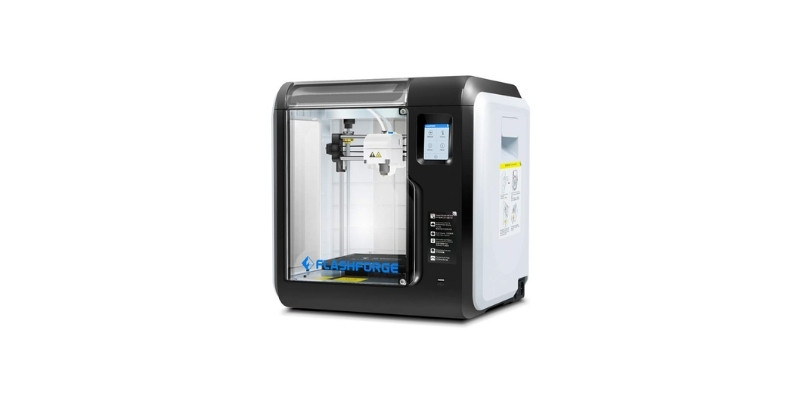
Pros
Reliable and beginner-friendly.
Can print multiple filaments.
Great for schools.
Cons
The propriety nozzle assembly is pricey.
The Flashforge Adventurer 3 Lite is a simple 3D printer, specifically it’s a deliberately stripped-down version of its predecessor to make it much easier to use for beginners.
Naturally, this makes it an excellent first step in 3D printing as well as a fantastic teaching tool for younger users. 3D printing Lego with the Adventurer Lite is ideal, its enclosed print space and stable design make warping much less of an issue, which is especially a problem with with ABS, and its average sound output of only 45db means it’s not going to bother you mid-print.
While one of the smaller FDM printers out there, this shouldn’t hinder printing Lego pieces. It lends itself well to tinier bricks and minifigures, though you may end up disappointed if you want to branch out to larger projects too.
If you’re new to 3D printing and are eager to start printing Lego with an easy-to-learn and use machine, or if you’re looking to use 3D printing Lego as an educational exercise for other beginners, the Adventurer 3 Lite is a great way to go.
Anycubic Kobra / Kobra Plus
- Price: Check price at Anycubic here / Amazon here
- Build Volume: 220 x 220 x 250mm / 350 x 300 x 300mm
- Max Print Speed: 180mm/s / 180mm/s
- Minimum Layer Height: 0.05mm / 0.05mm
- Max Extruder Temperature: 260℃ / 260℃
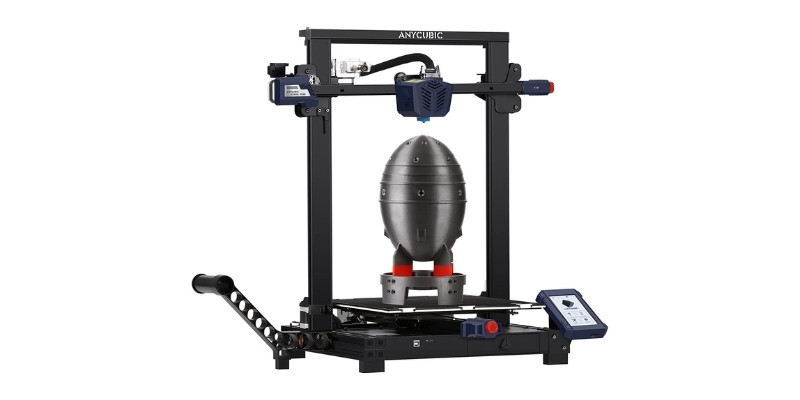
Pros
One of the cheapest 3D printers with auto-leveling.
Direct drive extruder is ideal for beginners.
Great performance for the price.
Cons
The build volume is a bit small.
If you’re not a beginner in 3D printing, or simply want to have a wider range of options when 3D printing your Lego sets, the Anycubic Kobra line is definitely worth a look, and performed great during our hands-on test.
They’re both strong and reliable machines that are great for 3D printing larger projects as well as smaller ones like Lego pieces with ease. Their resilient bed plate and large range of compatible filaments is also great news for those of you who’ve been let down before by lesser machines. This means you can print Lego with a variety of materials and won’t be limited to only ABS.
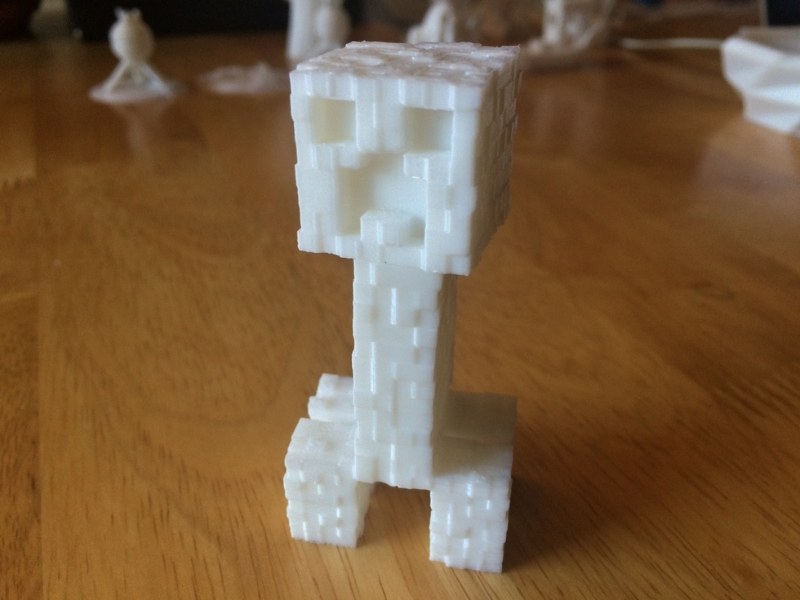
The main reason to opt for the Kobra Plus over the standard Kobra is its build size, which allows for larger prints as well as making more pieces at once if efficiency is a priority for you when 3D printing your Lego.
If you don’t need or want the extra build volume, then you’re better off saving your money and going for the original Kobra. Both are fast and accurate machines that won’t let you down in the accuracy department.
Full comparison: Anycubic Kobra vs Kobra Plus
Toybox 3D Printer
- Price: Check price at Toybox here
- Build Volume: 70 x 80 x 90mm
- Max Print Speed: 60mm/s
- Minimum Layer Height: 0.2mm
- Max Extruder Temperature: 220℃

Pros
One of the easiest 3D printers to use.
Ideal for beginners and kids wanting to build lego.
Comes with access to extensive toy files to print for free.
Cons
Smaller print area than most 3D printers.
If you’re mainly here to compare specs, then you may be wondering exactly why we’re even talking about the Toybox 3D printer after reading them. The answer is simple, it’s actually designed to 3D print toys like Lego!
Specifically created for kids, the Toybox is a fantastic start to any youngster’s 3D printing journey. And because it’s an FDM printer, it great for 3D printing Lego bricks. However, it cannot handle ABS, which is bad news for those of you who want industrial-quality Lego pieces.

The Toybox is very easy to set up and use, and is a great option for those of you who are wondering how to get your kids into 3D printing in a safe and simple way. Overall, it’s not taking home any awards for its specs, but it’s a great option for 3D printing Lego or even just toys in general.
Read the full review: Toybox 3D printer review
Prusa MINI+
- Price: Check latest price at Prusa here
- Build Volume: 180 x 180 x 180mm
- Max Print Speed: 200mm/s
- Minimum Layer Height: 0.05mm
- Max Extruder Temperature: 280℃
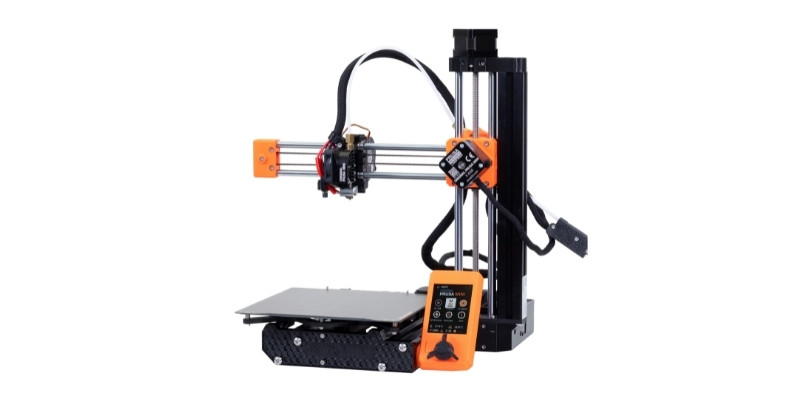
Pros
Reliable and durable, like all Prusa printers.
Fast print speeds.
Cons
The gantry system isn’t very sturdy.
Despite it being one of the most expensive entries to our list of the best 3D printers for Lego, the Prusa MINI+ is still considered a budget 3D printer due to its moderately large build size and its impressive print speed.
While great for 3D printing Lego amongst other FDM projects, it is mainly a printer for people already used to 3D printing. It’s not ideal as a teaching tool as it lacks many of the safety features that would make it suitable for kids. For example, it doesn’t have an enclosure and heats to a very high temperature.
That’s not to say it’s a dangerous machine however, it’s simply to say that it’s not generally suitable for younger or inexperienced users if they’re not used to the dangers of using a 3D printer.
Though if you’re already in the know about 3D printing, then we recommend checking out the Prusa MINI+ as a sturdy and speedy model for 3D printing Lego pieces and so much more. It is also available either pre-assembled or as a kit, which does affect its price.
Prusa i3 MK3S+
- Price: Check latest price at Prusa here
- Build Volume: 250 x 210 x 210mm
- Max Print Speed: 200mm/s
- Minimum Layer Height: 0.05mm
- Max Extruder Temperature: 300℃

Pros
Reliable and durable.
Comes with auto-leveling and many other time-saving features.
Cons
Can take a long time to build unless you buy it pre-built.
While the i3 MK3S+ may seem overpriced compared to the MINI+ from the same manufacturer, the additional cost accounts for so much more than the massively increased build volume.
The i3 MK3S+ is about as sturdy as it gets as it’s made from very high-quality parts. This adds not only to the safety factor, but also makes it a more reliable printer for printing small pieces like Lego with good accuracy.
It also has a huge range of compatible filaments as well as an automatic filament sensor, streamlining the printing process and taking some of the work off your shoulders.
If you want a large and powerful 3D printer that can make anything from tiny Lego pieces to larger busts and statues, then the i3 MK3S+ is worth the larger price tag as either a kit or a pre-assembled machine.
Like the MINI+, however, it’s not generally suitable for younger users or those who doubt their experience in 3D printing.
3D Printing Lego – Hints and Tips
Now that you’ve got a good idea of what are the best 3D printers for making Lego, as well as what kinds of pieces you can make, you should be ready to get printing.
Before you really start warming up those files, though, there are a few more little things you should keep in mind. Here are some extra helpful hints to make sure not only that your 3D printed Lego sets come out right, but you also have fun making them.
Get Your Youngsters Involved
Lego advertises their products as suitable for ages 4-99, and that’s no lie. Lego sets are fun and creative projects for children and adults alike. I’m in my 30s and I can tell you I still enjoy the occasional build.
This all-ages appeal makes 3D printing Lego an excellent way to introduce any youngsters in your life to 3D printing. The process of making your own Lego as well as the end results should keep little ones entertained and invested while you show them how it all works, and makes for a great first step.
Be advised, however, that 3D printing isn’t without its dangers. So be sure to keep an eye on your little learners and teach them safety around 3D printers above all else. This includes which parts get hot, what not to touch, and why they should keep their distance while your 3D printer is doing its job.
Ensure Accuracy
As we’ve touched on before here, Lego bricks need to be exactly right to fit together and stay connected. While a millimeter or two off won’t make a difference to most projects, 3D printed Lego needs to match exactly to work like the real thing.

Ensuring accuracy in the original design and maintaining it while you make tweaks is imperative to ensuring you get working 3D printed Lego bricks. There’s nothing worse than a wobbly rocket or lopsided house, after all, and it can really dampen what should have been a fun build.
Keeping notes and tabs on specific sizes of interlocking pieces is a good way to do this, and is especially important if you’re 3D printing a Lego set made up of different files from different designers, who may use non-standard measurements.
Be Creative
One of the best things about Lego is how well it works as an exercise in creativity, and the potential for inspiration is increased dramatically by 3D printing your own Lego bricks and pieces.
Personally, I’ve always enjoyed making up buildings and models as I go with an assortment of bricks from the massive box I mentioned earlier, though sometimes I do stick to the structure of pre-designed sets.
When adhering to these sets, I still enjoy branching out. Replacing certain bricks with ones of differing shapes and sizes. It can be as simple as making a ramp instead of a staircase or putting Darth Vader’s helmet on the mantlepiece, to switching up entire buildings to include balconies, solar panels, or anything else you’d like.
By 3D printing these pieces, you have all the freedom you need to swap out and test what works and what doesn’t. Unlike many projects, the fun of 3D printing Lego doesn’t end when your printer’s done. There’s always so much more fun to be had and creative ideas to explore!
Is it Cheaper to 3D Print Lego?
I don’t know about you, but I’m old enough to remember when you could buy decent Lego sets with a standard allowance (and let me tell you, my allowance was not that high!)
These days, however, it seems Lego is more of a luxury toy than a stocking stuffer. There’s still a massive box of Lego pieces in my mom’s attic that I bought set by set with chump change that these days would probably amount to upwards of $500!

3D printer filaments are a lot cheaper, and make of pieces depending on the scope of your designs. Overall, 3D printing Lego is far cheaper than buying standard sets. While you likely won’t get the same quality as official purchases, 3D printing is a surefire way to get yourself some good Lego sets without having to rearrange your budget.
As of writing, a 1kg box of assorted Lego pieces from the official store is around $30. These don’t include minifigures, set instructions, or licensed characters.
Taking into account that a 1kg spool of ABS costs around $21 – $25 and can be used to make exact bricks you want or need as well as 3D printed Lego minifigures and set pieces of whatever you like, you can see that 3D printing Lego does work out a lot cheaper, especially in the long run.
Is it Legal to 3D Print Lego Pieces?
Something that’s likely to have been on your mind throughout this article is the legality of 3D printing your own Lego pieces and sets. The simple answer is yes, it is perfectly legal, but only if you make sure to avoid crossing certain lines.
Lego is a registered trademark, so any breaches of copyright will be actionable. If you plan on sharing your 3D printed Lego creations online, avoid using copyrighted terms and characters. Tempting as it may be to charge for your shared designs, doing so will violate copyright law and may land you in hot water.
Aside from that, you’re completely free to download and print as many Lego (and Lego-inspired) pieces as you like!
Related Posts:

